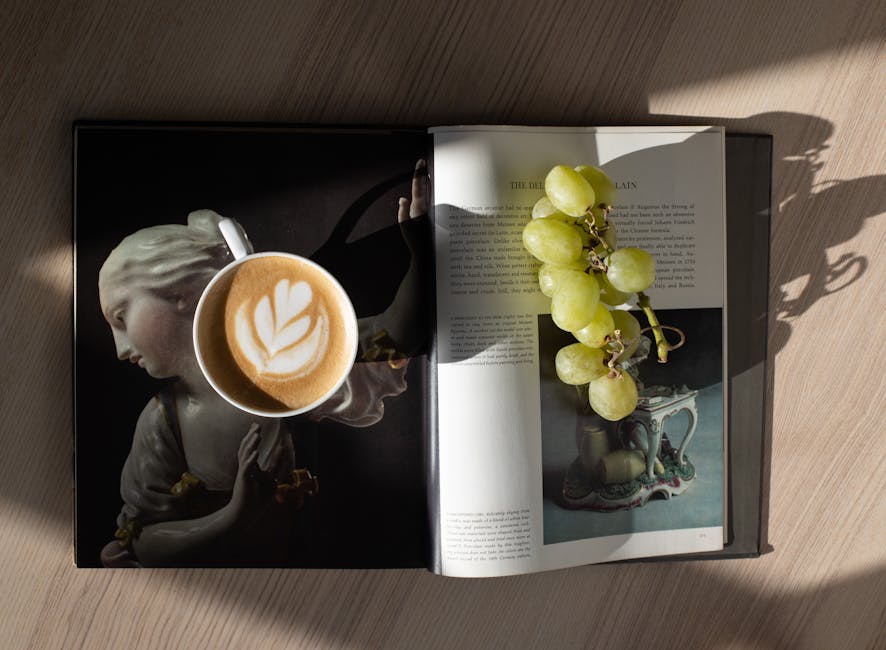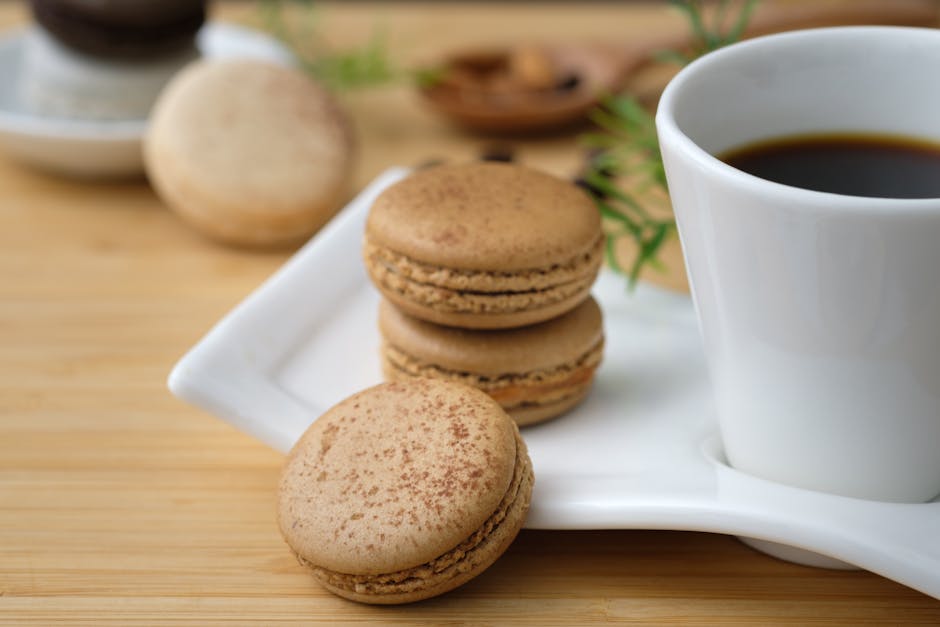
Do Tea Leaves Expire? Find Out If Your Tea is Still Good!
Tea is one of the oldest beverages in the world, cherished for its rich flavors and numerous health benefits. But have you ever wondered, will tea leaves expire? Just like any other consumable, tea leaves have a shelf life that can impact their taste and quality. Understanding the nuances of tea leaves expiration is crucial for any tea enthusiast who wants to savor the perfect cup every time.
While tea leaves don't 'expire' in the same way perishable foods do, they certainly lose their potency and flavor over time. Several factors, such as the type of tea, storage conditions, and packaging, play significant roles in determining how long your tea will stay fresh. For example, green and white teas are more delicate and tend to degrade faster than robust black teas or oolongs.
In this article, we'll delve into the signs that indicate your tea may be past its prime and offer practical tips on how to store your tea to maintain its freshness for as long as possible. So whether you're a casual tea drinker or a dedicated connoisseur, understanding tea leaves expiration will help you make the most out of your tea collection.
Visit us today to explore your own magic of the perfect brew at Darkness of the Twilightmoon.
Factors Influencing Tea Shelf Life
The shelf life of tea leaves is influenced by a variety of factors, each playing a crucial role in determining how long your tea will remain fresh and flavorful. By understanding these factors, you can take steps to extend the life of your tea collection.
1. Type of Tea: Different types of tea have varying shelf lives. Generally, more delicate teas like green and white teas degrade faster due to their minimal oxidation. Conversely, black teas, oolongs, and pu-erh teas are more robust and can last longer when stored properly.
2. Storage Conditions: The way you store your tea significantly impacts its longevity. Exposure to light, heat, moisture, and strong odors can accelerate the degradation process. Always store your tea in an airtight container, preferably in a cool, dark place to maintain its freshness.
3. Packaging: The packaging of your tea can also affect its shelf life. Loose leaf teas generally last longer than tea bags because they are less exposed to air and light. High-quality packaging that offers a good seal will help preserve your tea’s flavor and aroma for a longer time.
4. Humidity: Moisture is one of the biggest enemies of tea. Even a small amount of humidity can cause mold to grow on your tea leaves. Using desiccants or silica gel packets in your storage containers can help absorb excess moisture and keep your tea dry.
5. Air Exposure: Tea leaves that are frequently exposed to air will oxidize faster, losing their flavor and aroma. Always reseal your tea containers tightly after each use to minimize air exposure.
By taking these factors into account, you can significantly extend the shelf life of your tea, ensuring that each cup you brew is as delightful as the first.
Signs Your Tea Leaves Have Gone Bad

It can be disappointing to discover that your favorite tea has lost its charm. Recognizing the signs that your tea leaves have gone bad is essential to ensure you're always enjoying a fresh brew. Here are some key indicators to look out for:
1. Loss of Aroma: Fresh tea leaves typically have a distinct and pleasing aroma. If your tea has lost its scent or smells stale, it's a clear sign that the leaves have aged and lost their essential oils.
2. Color Change: The appearance of your tea leaves can tell you a lot about their condition. Fresh tea leaves maintain a vibrant color. If you notice a dull or faded appearance, it's an indication that the tea has oxidized and degraded.
3. Flavor Degradation: One of the most telling signs is a change in flavor. If your brewed tea tastes flat, musty, or lacks its usual depth and complexity, the leaves have likely gone bad. Fresh tea should have a lively, robust flavor profile.
4. Presence of Mold: This is the most obvious and concerning sign. If you find any mold or unusual spots on your tea leaves, discard them immediately. Mold can develop if tea is stored in a humid environment.
5. Texture Changes: Fresh tea leaves should be crisp and dry. If they feel soft, sticky, or clump together, it’s a sign that they have absorbed moisture and are no longer good to use.
By being mindful of these signs, you can ensure that you only brew with fresh, high-quality tea leaves, making each cup a pleasant and enjoyable experience.
Proper Storage for Prolonging Freshness

Proper storage is key to maintaining the freshness of your tea leaves and ensuring every cup you brew is bursting with flavor. Here are some essential tips for storing your tea correctly:
1. Keep It Airtight: Exposure to air can cause tea leaves to oxidize and lose their flavor. Store your tea in an airtight container to protect it from oxygen and maintain its freshness. A tin or a glass jar with a tight seal works well for this purpose.
2. Avoid Light: Light, especially sunlight, can degrade tea leaves quickly. Choose opaque containers or store your tea in a dark place to prevent it from being exposed to light. Cabinets and drawers are excellent options.
3. Control Temperature: Tea leaves are best stored at a consistent, cool temperature. Avoid placing your tea near heat sources or in the refrigerator, as fluctuations in temperature can affect the quality. Aim for a storage area that's cool but not cold.
4. Minimize Moisture: Moisture is a tea leaf’s worst enemy. Ensure your storage container is completely dry before adding tea, and keep it away from humid environments like the kitchen or bathroom. Silica gel packets can be added to absorb any extra moisture.
5. Isolate Strong Odors: Tea leaves can absorb odors from their surroundings, which can alter their flavor. Store your tea away from strong-smelling foods or spices. If possible, use a separate pantry or cupboard dedicated to your tea collection.
6. Buy in Small Quantities: To ensure your tea is always fresh, consider buying smaller quantities more frequently. This way, you can enjoy your tea at its peak flavor without worrying about long-term storage.
By following these storage tips, you can extend the shelf life of your tea leaves and savor their rich, delightful flavors for a longer period.
How Different Types of Tea Age

Not all teas age in the same way, and understanding how different types of tea age can help you better manage your tea collection.
Green Tea: Known for its fresh, grassy flavor, green tea is best consumed within six months to a year of purchase. Due to its minimal oxidation, green tea loses its flavor and aroma quickly. Proper storage can slightly extend its freshness, but it's best to enjoy it sooner rather than later.
White Tea: This delicate tea can age gracefully if stored properly. While it doesn't have the same longevity as pu-erh or oolong, white tea can still be enjoyable for up to two years. Over time, its flavor profile may become more mellow and sweet.
Oolong Tea: Oolong tea falls somewhere between green and black tea in terms of oxidation. Depending on its level of oxidation, oolong can age well for several years. Lightly oxidized oolongs should be consumed within one to two years, while heavily oxidized oolongs can develop richer flavors over time, sometimes lasting up to five years.
Black Tea: With its full oxidation, black tea has a robust flavor that can last for a few years if stored correctly. Typically, black tea is best within two to three years, but some high-quality black teas can age well for even longer, developing deeper and more complex flavors.
Pu-erh Tea: Unique among teas, pu-erh can improve with age like a fine wine. Raw (sheng) pu-erh can be aged for decades, with its flavor evolving and becoming more nuanced over time. Ripe (shou) pu-erh, which undergoes an accelerated aging process, can also benefit from aging, though it typically peaks within five to ten years.
Understanding how different teas age helps you optimize your tea experience, allowing you to enjoy each type at its best.
Tips for Maximizing Tea Longevity

Proper storage is essential to maximize the longevity and flavor of your tea. Here are some expert tips to help you keep your tea fresh for as long as possible:
- Airtight Containers: Store your tea in airtight containers to protect it from exposure to air, which can cause oxidation and degrade its flavor. Glass jars with tight seals, metal tins, or vacuum-sealed bags are excellent options.
- Keep It Cool: Heat can accelerate the degradation of tea leaves, so store your tea in a cool, dark place. Avoid areas near ovens, stoves, or windows where temperature fluctuations may occur.
- Avoid Light: Prolonged exposure to light, especially direct sunlight, can break down the delicate compounds in tea leaves. Opaque or dark-colored containers can help block light and preserve the tea's quality.
- Control Humidity: Tea leaves readily absorb moisture, which can lead to mold and spoilage. Keep your tea in a dry environment, and consider using desiccant packets to absorb excess humidity.
- Separate Strong Aromas: Tea can easily absorb surrounding odors, which can alter its flavor. Store your tea away from strong-smelling foods, spices, or cleaning supplies to maintain its pure taste.
- Purchase in Small Quantities: Buying tea in smaller quantities ensures that you consume it while it's fresh. This is especially important for more delicate teas like green and white tea.
By following these tips, you can enjoy the full flavor and aroma of your favorite teas for as long as possible. If you're looking to explore a diverse range of gourmet teas and learn more about proper tea storage, visit us today to explore your own magic of the perfect brew at Darkness of the Twilightmoon.